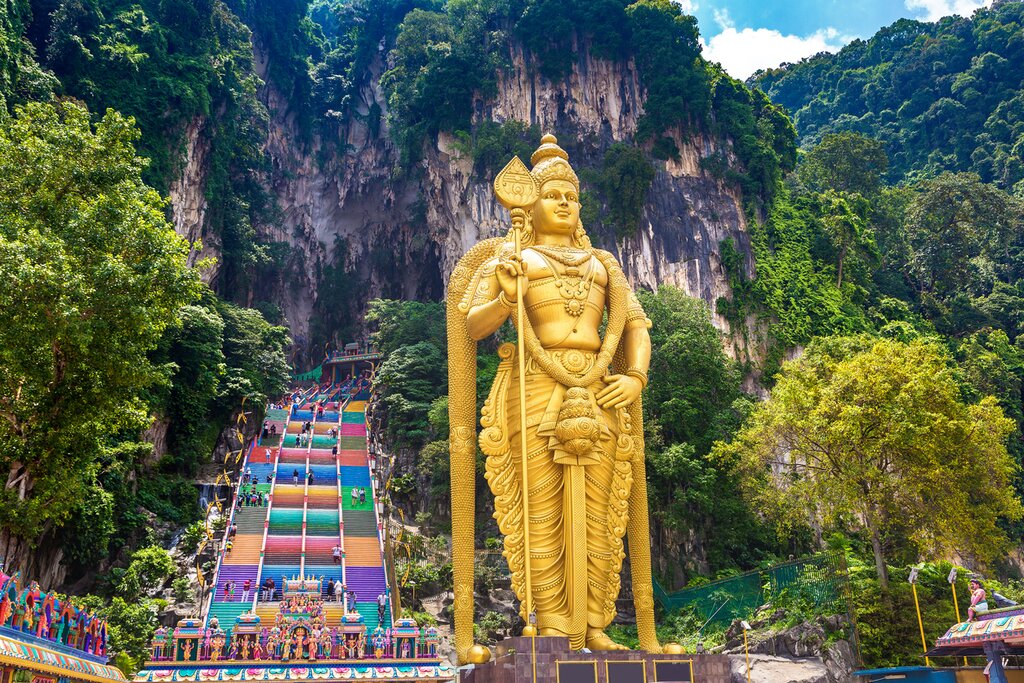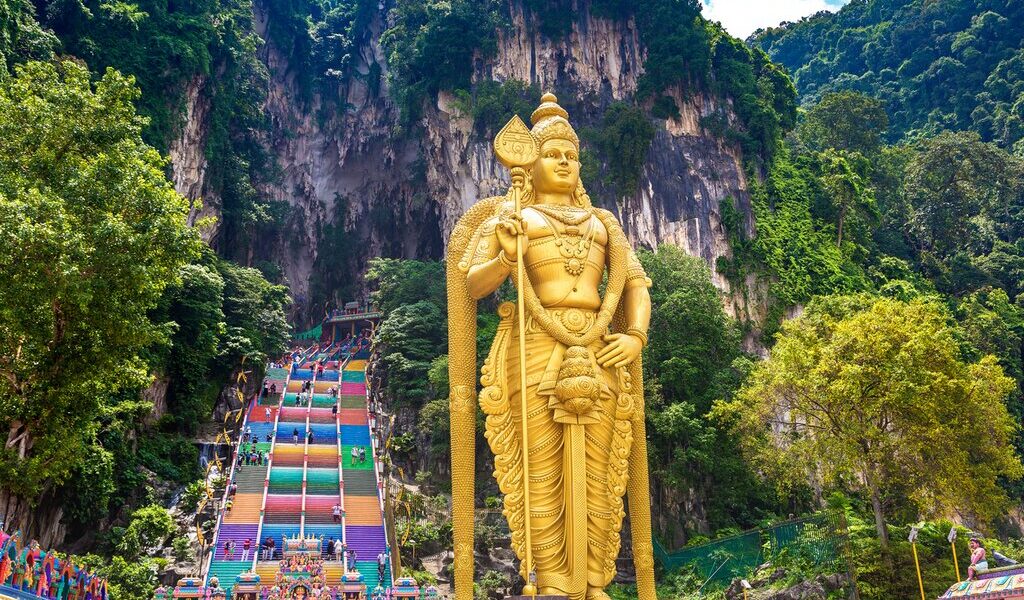
With generally good weather in some of the most popular beach destinations and a host of exciting festivals, January is a good month to visit Malaysia. It’s peak season in Langkawi, and Lunar New Year (if it falls in January) brings festive crowds to the cities and areas with Chinese influence, but these all add to the fun of visiting Malaysia in January. Read on to find out more.
Malaysia in January: A Comprehensive Guide
Malaysia, a captivating nation sprawling across a multitude of islands, presents a unique challenge when attempting to generalize its weather patterns. The climate is nuanced, and regional variations are significant. While one area might be basking in relative dryness, another could be experiencing the full force of the monsoon season. Generally, Malaysia experiences two primary seasons: the wet season and the dry season. However, it’s crucial to understand that these seasons do not occur simultaneously across the entire country. The timing of each season varies from region to region, creating a dynamic and diverse climatic landscape. Throughout the year, temperatures remain relatively stable, typically fluctuating between a comfortable 71°F (22°C) and a balmy 91°F (33°C). Higher altitude regions, however, offer a refreshing respite from the heat, boasting cooler temperatures.
January is frequently cited as a dry month in Malaysia, but it’s essential to approach this statement with a degree of nuance. The term “dry” is relative and primarily applies to specific areas of the country. Destinations such as Kuala Lumpur, the vibrant capital city, Penang, renowned for its culinary delights and cultural heritage, Melaka, a historic city steeped in tradition, and Langkawi, an archipelago paradise famed for its pristine beaches—all located on the western side of Peninsular Malaysia—tend to experience drier conditions in January. While visitors can anticipate some rainfall, it is generally less intense compared to the heavy downpours characteristic of the wet season. Conversely, the northeastern coast of the peninsula, the eastern islands, including the popular Perhentian Islands, and the western coast of Sarawak (Malaysian Borneo) are typically wet during January, often drenched by the persistent northeast monsoon. Planning your travels with these regional variations in mind is essential for a fulfilling Malaysian experience.
The month of January coincides with the peak tourist season in the western regions of Malaysia, particularly the enchanting Langkawi Islands, a sought-after destination for beach lovers and sun seekers. The allure of sun-kissed shores and crystal-clear waters draws a multitude of visitors during this period. Moreover, major festivals, such as the New Year celebrations, the vibrant Lunar New Year (Chinese New Year), and the captivating Thaipusam festival, which may fall in January depending on the lunar calendar, attract large crowds to various locations, especially Kuala Lumpur and Penang. As a result of increased demand, hotel prices in these popular western areas tend to be higher in January compared to the off-season or wet season. Conversely, you can expect to find more competitive accommodation rates in Borneo during this time, but the heavy rainfall might make it a less ideal period to visit, especially if you plan on engaging in outdoor activities.
Navigating the Weather for an Unforgettable Trip
Given the prevailing weather conditions in January, it is generally advisable to concentrate your travels on the western parts of Peninsular Malaysia. This region is home to many of Malaysia’s most beloved tourist destinations, including the bustling metropolis of Kuala Lumpur, the cultural hub of Penang, the historical city of Melaka, and the idyllic islands of Langkawi.
Penang, an island situated in the northwest, offers a captivating blend of attractions. It boasts stunning beaches, a vibrant cultural scene centered around the historic George Town, a UNESCO World Heritage Site, and the lush, jungle-clad Penang National Park. January presents an opportune time to explore Penang, as beach activities, city sightseeing, and hiking in the national park are all made more enjoyable by the drier weather. Spend several days immersing yourself in the rich heritage of George Town, discovering its colonial-era architecture, captivating street art, traditional clan houses, and bustling markets. Afterward, unwind at a luxurious resort in or near Batu Ferringhi, a coastal strip renowned for its beautiful beaches on the north coast.
For active travelers, a hike through Penang National Park is highly recommended. The park offers a variety of trails, catering to different fitness levels and preferences. These trails lead to scenic look-out points and secluded beaches, offering breathtaking views of the surrounding landscape.
Alternatively, venture to Langkawi, a name that refers to both an archipelago and its main island. If your priority is to bask in the sun and enjoy pristine beaches, then Langkawi in January is an absolute must-visit. The beaches boast powdery white sand, the sea shimmers with clear turquoise waters, and a wide range of accommodation options are available to suit every budget. Pantai Cenang and Tanjung Rhu are excellent beach choices, each offering its own unique charm. If you seek a break from the beaches, consider exploring the diverse wildlife, including pythons and macaques, in the Kilim Karst Geoforest Park, or ascend to the summit of Gunung Raya, Langkawi’s tallest peak, accessible by either hiking or driving.
Unmissable Activities and Experiences
Travelers visiting Langkawi should not miss the opportunity to ride the cable car up to the Langkawi SkyBridge, a remarkable feat of engineering. This pedestrian bridge is suspended by cables atop Gunung Mat Cincang peak. As you ascend to an elevation of 2,170 feet (660 m), you can enjoy the slightly cooler temperatures and marvel at the incredible panoramic views from this impressive structure.
One of the primary reasons why January is a popular time for tourists to visit Malaysia is the chance to participate in several of the country’s vibrant cultural festivals. While both Hindu and Chinese festivals adhere to the lunar calendar, resulting in fluctuating dates on the Gregorian calendar each year, the Hindu festivals of Pongal and Thaipusam, as well as the Lunar (Chinese) New Year, often occur in January (more details below).
To witness the most spectacular Thaipusam festivities, head to the Batu Caves, located just outside Kuala Lumpur. These caves are a worthwhile attraction year-round, with their towering golden statue of Tamil Lord Murugan and the hundreds of steps leading up to the cave entrance. During Thaipusam, the complex becomes a vibrant hub of activity, filled with devotees and spectators. Devotees engage in acts of penance as a form of fulfilling vows and having their prayers answered. These acts can range from fasting and shaving the head to piercing the body with hooks and carrying heavy burdens. While this festival can be overwhelming for those unfamiliar with its practices, it offers a fascinating glimpse into Tamil Hindu culture.
Lunar New Year, frequently referred to as Chinese New Year due to its celebration by Malaysia’s Chinese community, may also fall in late January. The best places to witness colorful parades and energetic dragon dance troupes are the cities of western Malaysia with significant Chinese populations: Kuala Lumpur, Penang, and Melaka.
January Events to Experience
Pongal, celebrated nationwide (in Tamil Hindu communities). This Tamil Hindu harvest festival, observed in mid-January, derives its name from the Tamil word meaning “overflow.” During Pongal, traditional dishes are prepared using the freshly harvested rice and sugar, symbolizing an abundance of food.
Thaipusam, celebrated nationwide (in Tamil Hindu communities). This Tamil Hindu festival takes place in late January or early February, honoring the Tamil Lord Murugan (Subramaniam). Devotees sometimes perform astonishing acts of self-mortification as a display of their faith and devotion.
Lunar New Year, celebrated nationwide (especially in Chinese communities). The lunar new year is widely celebrated among Malaysia’s Chinese communities, with Malaysians from diverse backgrounds often joining in the festivities. Expect to encounter vibrant parades featuring floats, traditional dragon and lion dancers, and stilt walkers in the western cities of Peninsular Malaysia. The Lunar New Year can occur between late January and mid-to-late February.
More Helpful Information
(Links removed as requested)

